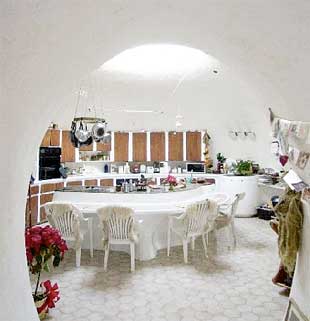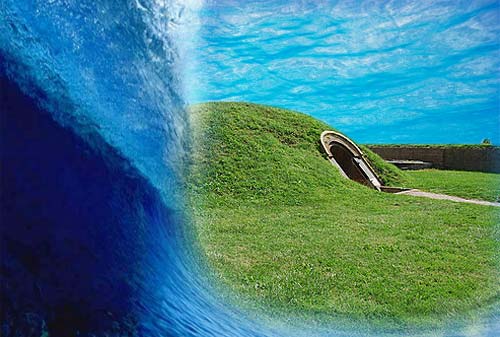Underground Homes & Moisture
Some people think that the underground homes are just like caves
and are dark from inside, but that is not always the case.
|
Some beautifully designed underground
homes consist of large windows for letting in the sunshine.
Moisture is another issue.
|
 Dealing with Moisture Underground is Important
Dealing with Moisture Underground is Important |
Where to build Underground Homes?
Some styles of underground houses or earth-bermed homes are built
on the flat land and all the rooms on the ground are built be
around the courtyard. The rooms have large windows or the glass
walls that faces the courtyard. But the main problem of this design
is that you are not able to see out of such houses except the
sky and the courtyard. There are many other styles, however, that
don't adhere to this design such as underground
dome homes.
Major Disadvantage of Underground Homes:
- Moisture problems can cause damage to the home.
Underground homes face moisture problems due to several reasons.
The earth is more humid than the surrounding air so homes underground
need to deal with this added moisture. Moisture can also lead
to mold, and especially black mold can be dangerous to your health.
Underground homes should never be built near flood areas as this
is a recipe for disaster. If you want to build underground then
choose higher elevations.

Build Your Underground Home on High Ground
Preventive Measures:
Indoor water damage occurs in those underground houses, which
are not tightly sealed during construction or don't have adequate
pumping systems to deal with the water. Also, the air is typically
moister in underground homes and a dehumidifier can help to keep
the air moisture at lower levels.
Drainage System:
The drainage system helps syphon off water that can accumulate
on the outside of the house. When the site is to be built you
need to make sure that it is properly filled with drainage pipes
and gravel. The walls should be waterproofed. One should not forget
to check water leakage in the underground homes because a small
amount of water could cause a serious damage to walls and other
materials.
1. Water proof coating:
In older underground homes or ones not built correctly, moisture
can enter through the cracks in the walls so you should fill the
gaps and then apply the waterproof coating. In this way, the moisture
has no space left to enter through the walls.
2. Pipe leakages:
People usually do not focus on pipe leakage, but it can happen
and the small drops of water from the pipe can cause a serious
damage to your underground home. Have a sump pump ready in order
to remove excess water from the house. Also have your pipes inspected
regularly to make sure everything is working properly.
So, the two biggest moisture problems in underground homes are
leaks and moisture in the air. Both can be addressed and the builders
will help you through this process should you decide this is the
style of living you want.
|

